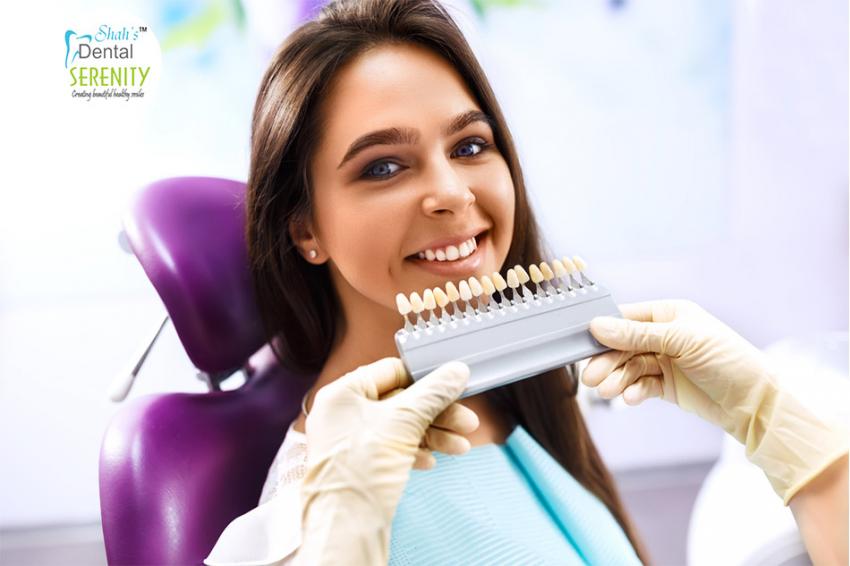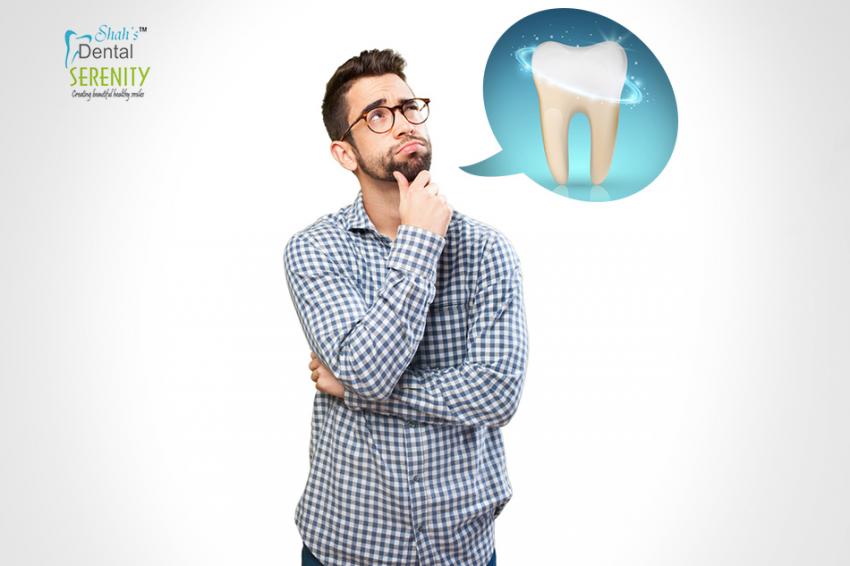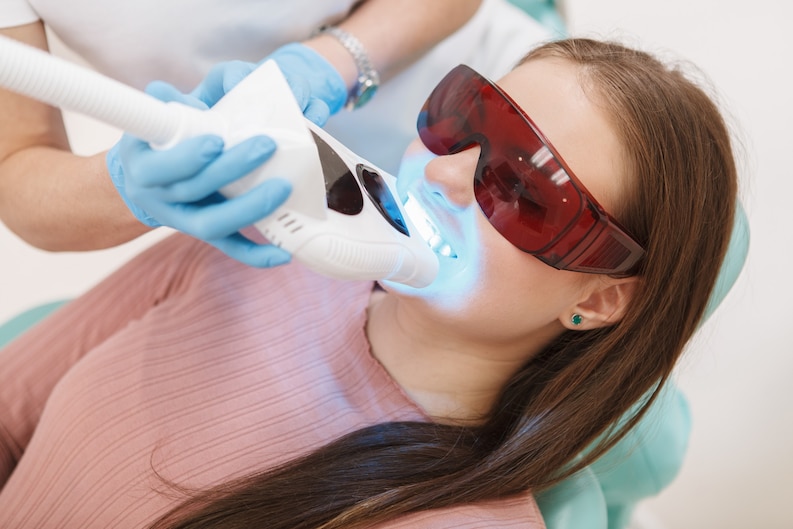Teeth Whitening 101: Essential Tips and Tricks You Need to Know
Welcome to Teeth Whitening 101! Discolored teeth can be a major confidence-doubter, but fret not, we’ve got you covered. In this blog, we’ll cover everything from the causes of teeth discoloration to the various whitening products and natural methods available. We’ll also provide tips for preparing for a whitening treatment, safety concerns, and aftercare. Stick around, and you’ll be on your way to a brighter smile!
Causes of Teeth Discoloration
It’s not uncommon for teeth to darken or yellow with age but if your smile isn’t quite as sparkling as you’d like, don’t worry, as you’re not alone. Teeth discoloration is a common issue that can be caused by a variety of factors such as genetics, smoking, medication, trauma, as well as food and drinks. Your favorite beverages like coffee, tea, and red wine, can cause staining, as well as acidic foods, which weaken enamel, making teeth more prone to discoloration and stains.
Aging is another significant factor that contributes to tooth discoloration. Over time, the outer layer of the enamel gets worn down, exposing the yellowish dentin underneath. Trauma and medication, including chemotherapy and radiation therapy, can also cause teeth to become discolored.
While you can’t do anything about ageing or genetics, you can cut back on smoking, soda, tea, and coffee or drinking through a straw. You can also brush more often or rinse your mouth after consuming foods and drinks that can stain. Fewer stain-inducing food items in your diet can make a significant difference in your teeth’s color.
Types of Teeth Whitening Products
If you’re looking to whiten your teeth, you’re in luck – there are a variety of products to choose from! Whitening toothpaste is a simple and affordable option that can help remove surface stains. Be aware that these products may not provide dramatic results and can’t change the natural color of your teeth.
Whitening strips are another popular option, and are easily applied at home. They contain a peroxide-based gel that can penetrate deeper into the tooth, providing more noticeable results. Keep in mind that these strips can cause sensitivity and should only be used as directed.
Whitening gels and trays are a bit more involved, but can provide more dramatic results. These products work by applying a gel to custom-fitted trays that are worn over your teeth. The tray keeps the gel in contact with your teeth for an extended period of time to allow for deeper penetration. This method can cause sensitivity and is recommended to be used under the guidance of a dental professional.
Finally, for the most dramatic results, in-office whitening treatments are available. These treatments use high-concentration bleaching agents that can whiten teeth in just one appointment. However, due to the high concentration of the chemicals used, it’s important to have this treatment done by a dental professional.
Ultimately, the best whitening option for you may depend on your budget, desired results, and sensitivity level. Consult with a dental professional before beginning any whitening treatment to ensure optimal safety and effectiveness.
Natural Teeth Whitening Methods
So you want pearly whites without using harsh chemicals? Fear not, there are natural teeth whitening methods that can do the trick.
First up is oil pulling, an ancient Ayurvedic technique where you swish oil (typically coconut oil) in your mouth for 15-20 minutes before spitting it out. The oil is said to pull out toxins and bacteria, leaving your teeth looking brighter.
Charcoal may sound counterintuitive, but activated charcoal can actually help whiten your teeth. Mix it with water to form a paste, then brush your teeth with it. It works by absorbing impurities and stains on your teeth.
Baking soda is another classic natural option. Mix baking soda with water to form a paste, then brush your teeth with it. Baking soda has natural whitening properties and can help remove stains.
Finally, strawberries may be a delicious snack, but they can also help whiten your teeth. Mash up some strawberries and mix with baking soda to form a paste. Brush your teeth with the paste and rinse thoroughly. The malic acid in strawberries can help remove surface stains and leave your teeth looking brighter.
So there you have it, some natural teeth whitening methods to try out. Just remember that natural methods may take longer to show results, but they are gentler on your teeth and overall health.
Teeth Whitening Preparation
Before starting the teeth whitening process, there are a few things you need to keep in mind to ensure you get the best results. First things first, consult your dentist to determine if you are a suitable candidate for teeth whitening.
Your dentist will examine your oral health and advise you on the best teeth whitening method based on your individual needs. Remember, not everyone can use all teeth whitening products.
Once you have consulted your dentist, it’s time to choose a whitening method. With so many options available in the market, it can be overwhelming to decide which one to choose. However, your dentist can help you pick the best one based on your desired outcome.
It’s also important to avoid certain foods and drinks that can stain your teeth during the whitening process. Beverages like coffee, red wine, tea, and acidic drinks should be avoided for a few days following a teeth whitening treatment.
By keeping these things in mind, you can achieve the result you’re looking for without any negative side effects. Trust us, you’ll be flashing your pearly whites in no time!
Safety Concerns
We all want dazzling white teeth, but some of us might be concerned about the side effects of teeth whitening treatments. Sensitivity, gum irritation and recessions, and overuse are common concerns when it comes to teeth whitening.
Sensitivity is one of the most common side effects of teeth whitening. It happens when the peroxide in the whitening product penetrates the enamel and irritates the nerve. It might feel like a sharp pain, but it’s usually temporary and goes away after a few hours.
Gum irritation and recessions are also common. The whitening product can irritate the gums and cause them to recede, exposing the root of the tooth. This can lead to sensitivity and other dental problems, such as cavities and gum disease.
Overuse of teeth whitening products can also have detrimental effects. Overuse can cause permanent damage to the enamel, making teeth more prone to decay and cavities. It can also cause sensitivity and gum problems.
To avoid these problems, it is important to follow the instructions on the teeth whitening product carefully. It’s also a good idea to consult your dentist before starting any whitening treatment. They can help you choose the best option for your dental health and advise you on safety precautions.
Teeth whitening might seem like a quick and easy fix, but it’s important to be patient and take care of your teeth to avoid any long-term problems.
Aftercare
Aftercare is crucial to maintaining the results of your teeth whitening treatment. Maintaining oral hygiene is the first step in ensuring your teeth stay white and bright. Brushing twice a day, flossing daily, and using an antiseptic mouthwash can help keep your teeth clean and healthy.
In addition to maintaining oral hygiene, touch-up whitening treatments can help prolong the effects of your initial treatment. Depending on the type of product you used, touch-up treatments may be recommended every six months to a year. It’s important to follow the instructions provided with your whitening product and avoid overuse as it can lead to sensitivity and gum irritation.
Remember, your teeth will still be susceptible to discoloration from certain foods and beverages, so it’s important to avoid or limit consumption of items like coffee, tea, red wine, and dark-colored fruits and sauces.
With proper care and maintenance, your bright, new smile can last for months or even years to come. So, take care of your pearly whites, and don’t forget to show off that smile!
Conclusion
After learning about the causes of teeth discoloration, various teeth whitening methods, preparation, safety concerns, and aftercare, it’s clear that whiter teeth are possible with proper care and patience. Before deciding on a method of whitening, it’s crucial to consult with a dentist or dental professional. Maintaining oral hygiene and avoiding certain foods and drinks can prolong the effects of whitening. With sensitivity and overuse being potential safety concerns, it’s important to closely follow the instructions provided with any whitening product. Remember, patience is key to achieving and maintaining a brighter, healthier smile!




